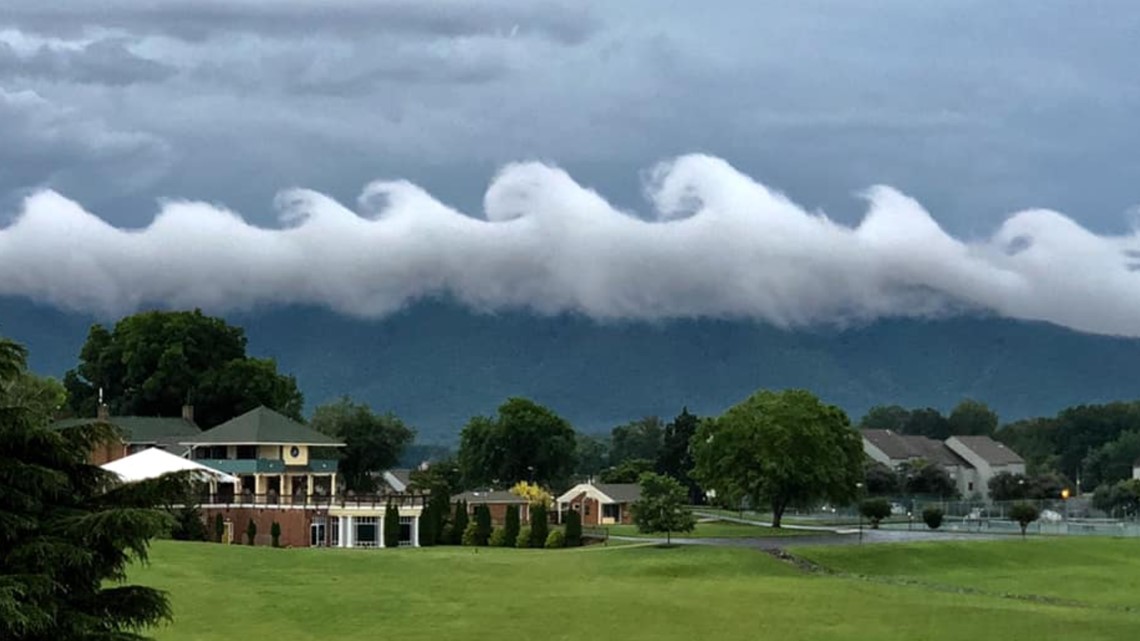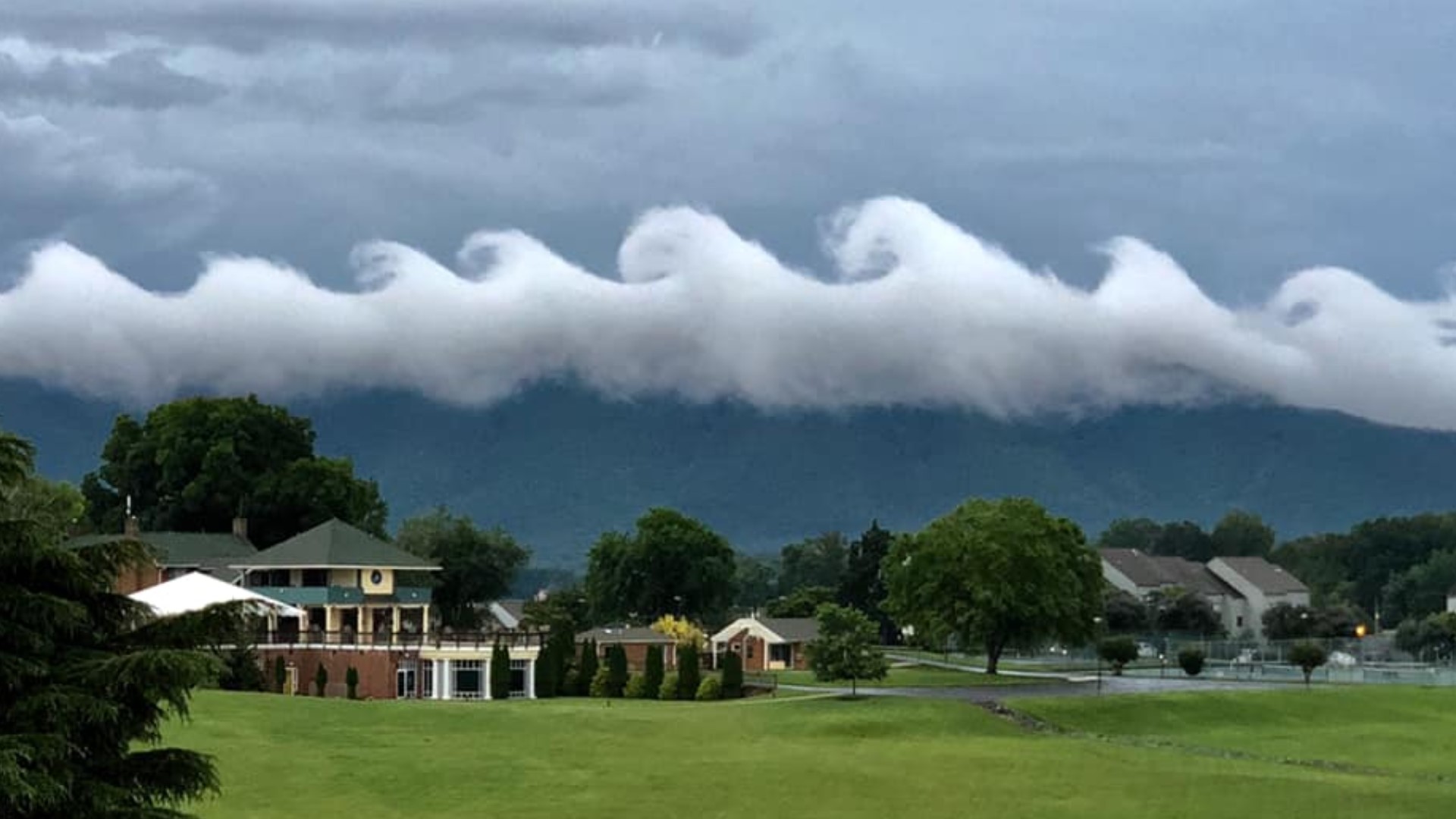You don't see clouds like these every day. "My jaw dropped!" said Amy Hunter, who snapped a photo Tuesday evening that is making rounds on the internet today. They're clouds that look more like ocean waves, and they're pretty rare to see in our area.
"I'd better grab my camera," said Amy when she saw these clouds. "I’ve been watching cloud formations over Smith Mountain for 18 years and I've never seen one like this."
But what are these clouds? Let's take a minute to put our thinking caps on and explain.
For the meteorologists in the room, these are known as "Kelvin-Helmholtz Clouds". But what causes them to look the way that they do? It all has to do with the way that the air is flowing through the atmosphere that day.
There's a reason they look like breaking waves in the ocean. After wind blows up and over a barrier, like a mountain, the air continues flowing through the atmosphere in a wavelike pattern. This swirling, turbulent air flow can give the clouds the appearance you see in Amy's picture. When there are two layers of air moving at different speeds you can occasionally get clouds that look like this.
Tuesday was a stormy day in Virginia and the Carolinas. These clouds can typically indicate a stormy and unstable atmosphere. They can also be a clue or an indicator of turbulence for air travel.


They don't typically last very long. According to Amy, these only stayed that way in the sky for around a minute before dissipating.
You can learn more about these clouds below:





